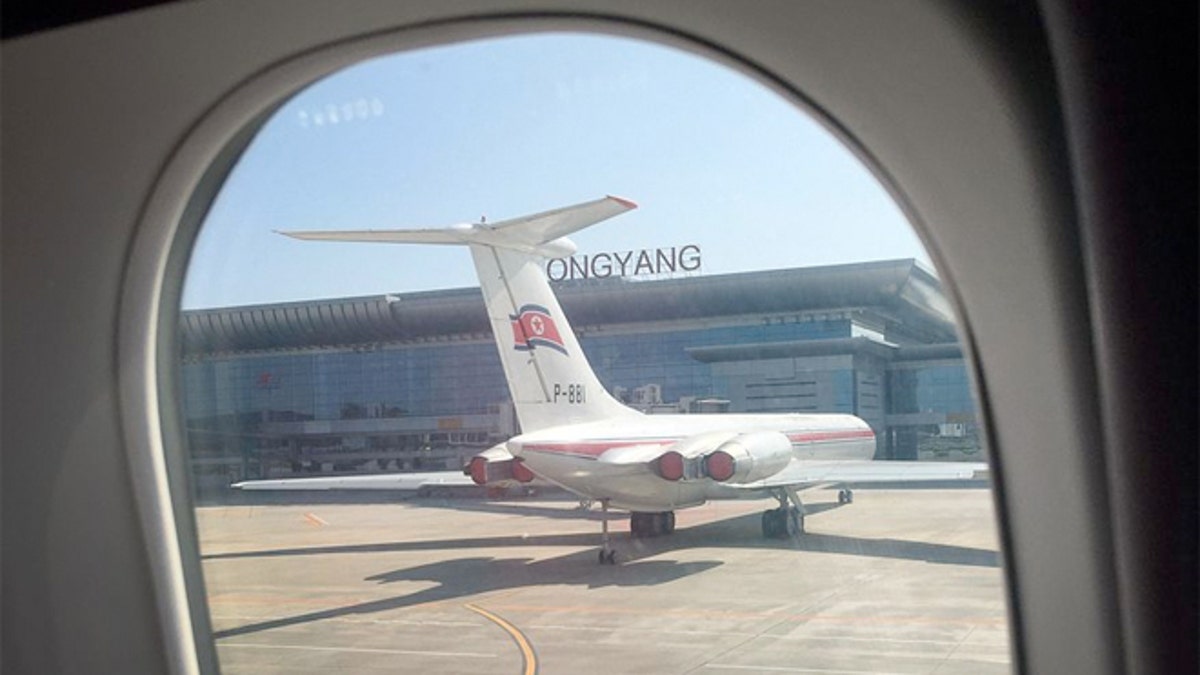- Published on
Pricing Refundable Flight Tickets - How much would you pay for the Optionality?
- Authors

- Name
- Teddy Xinyuan Chen

- Name
- Gemini
This post was prompted by me and made by LLMs! Please do not take it too seriously :)
You've seen it countless times: the baffling price difference between a standard, non-refundable flight ticket and its fully-refundable counterpart. "Pay $200 more just for flexibility?" you might scoff. But what if that extra cost isn't just a vague fee for convenience? What if it's the precisely calculated premium for a sophisticated financial instrument – an exotic option – hiding in plain sight?
Thinking about a fully-refundable ticket as an option unlocks a deeper understanding of why it costs what it does. Let's break it down.
Table of Contents
- The Core Idea: A Put Option on Your Trip
- Why "Exotic"? It's Not Your Average Stock Option
- Pricing the Premium: The Airline's Calculation
- Practical Estimation: Gauging the "Volatility" ($P_{\text{exercise}}$)
- Applying the Formula: Real-World Scenarios
- Conclusion
- Appendix 1 - Are the assumptions good?
- Appendix 2 - Can you arbitrage this?
The Core Idea: A Put Option on Your Trip
At its heart, a fully-refundable ticket gives you, the passenger, the right, but not the obligation, to "sell" your commitment to take that flight back to the airline at a predetermined price (your refund) before a specific deadline (the cancellation cut-off).

In finance terms, this is remarkably similar to a Put Option:
- Underlying Asset: The "value" or "utility" of taking that specific flight to you. This isn't a stock price; it's driven by whether your travel plans remain firm.
- Strike Price (): The amount you get back – essentially, the original purchase price of the refundable ticket ().
- Holder: You, the passenger.
- Writer/Seller: The airline.
- Expiration: The deadline by which you must cancel to get the refund (e.g., 2 hours before departure).
You paid a premium (the price difference between the refundable and non-refundable ticket) for the option to cancel if the "value" of taking the flight drops below the "value" of getting your money back (e.g., your meeting is cancelled, you get sick, you find a dramatically cheaper alternative).
Why "Exotic"? It's Not Your Average Stock Option
While the analogy is strong, it's not a perfect fit for standard models like Black-Scholes. Here’s why it qualifies as "exotic":
- Non-Traded, Subjective Underlying: The "value" of your trip isn't quoted on an exchange. It's unique to you and driven by unpredictable life events, not market sentiment or Brownian motion.
- Bermudan-Style Expiration: You can typically exercise the cancellation option (cancel the ticket) at discrete times up until the deadline, not necessarily only at the deadline (European style) or any time (American style).
- Event-Driven "Volatility": The likelihood of you cancelling isn't based on smooth price fluctuations. It's driven by binary events (trip on/off) and depends heavily on factors unique to the passenger and the trip context.
- Potential for Zero Resale Value for Airline: If you cancel moments before the flight, the airline can't easily resell that seat, unlike selling a stock underlying a standard option.
Pricing the Premium: The Airline's Calculation
Airlines don't use Black-Scholes directly, but they perform a sophisticated risk assessment akin to pricing an exotic option. They need to determine the premium:
Here’s the logic:
Base Price: Start with the price of a comparable non-refundable ticket (). This covers the basic cost of transport and standard profit assuming the passenger flies.
Estimate Cancellation Probability (): This is the core "volatility" factor. Based on vast historical data, what's the likelihood this type of passenger, on this type of route, booking this far in advance, will actually cancel within the allowed window?
Estimate Cost If Cancelled:
- The direct cost is refunding .
- The airline offsets this by the expected resale value of the cancelled seat. Let be the probability they can resell the seat, and be the expected revenue if resold. The expected recovery is . This recovery is much higher for early cancellations than last-minute ones.
- The Net Cost upon exercise is approximately .
Calculate Expected Cost (EC) of the Option: This is the probability of cancellation multiplied by the net cost incurred if cancellation happens.
For simplicity, especially considering many cancellations happen too late for meaningful resale, a conservative airline might estimate:
Add Markup: Airlines add a margin for profit and to buffer against estimation errors and risk.
Final Refundable Price Formula (Conceptual):
The premium you pay () is essentially the airline's calculated Expected Cost of offering you that cancellation right, plus their profit margin.
Practical Estimation: Gauging the "Volatility" ()
Airlines use sophisticated revenue management systems, but here are key factors influencing :
- Lead Time: Bookings made very far in advance have a higher cumulative probability of plans changing compared to last-minute bookings (though last-minute refundable bookings might be by people who expect changes).
- Passenger Segment: Business travelers often have higher cancellation/change rates than leisure travelers due to shifting meeting schedules. Airlines price this in.
- Route/Trip Purpose: Flights to major business hubs or routes serving industries with volatile schedules might see higher . A flight for a crucial, non-movable event (like surgery) has lower implied volatility than one for a speculative meeting.
- Fare Class / Flexibility Purchased: Passengers buying refundable fares are self-selecting as potentially needing flexibility, inherently increasing the average for that group.
- Historical Data & Trends: Airlines analyze cancellation patterns relentlessly by route, season, day of week, customer history, etc.
- External Factors: Economic downturns, weather events, pandemics dramatically increase overall travel plan volatility and thus .
Applying the Formula: Real-World Scenarios
Let's see how this plays out:
Scenario 1: The Last-Minute Business Traveler
- Need: High flexibility, meeting might change any second.
- Airline's View: High . Low chance of resale () if cancelled very late.
- Result: The term is high (). The premium () will be significant.
Scenario 2: The Family Vacation Planner (Booking 9 Months Ahead)
- Need: Moderate flexibility; plans seem firm now, but illness or unforeseen events over 9 months are possible.
- Airline's View: Moderate due to long time horizon. High and likely high if cancelled early.
- Result: The term significantly reduces the . The premium might be moderate, reflecting the long horizon but also the high chance of recouping value if cancelled early.
Scenario 3: The Budget Leisure Traveler (Weekend Getaway)
- Need: Low flexibility, highly price-sensitive. Trip is unlikely to be cancelled unless absolutely necessary.
- Airline's View: Assumes very low for standard fares. For a refundable fare, they'd still likely assign a baseline higher than this traveler's actual intent, making the premium feel exorbitant to this traveler.
- Result: The non-refundable is optimized for this segment. The refundable premium makes unattractive, reinforcing segmentation.
Scenario 4: The Conference Attendee
- Need: Flexibility tied to the event's certainty. If the conference might be cancelled or shifted online, flexibility is valuable.
- Airline's View: depends on the perceived stability of the event and lead time. Potentially moderate to high. Resale value depends on cancellation timing.
- Result: The premium reflects the airline's assessment of the event risk and the general cancellation probability for that route/time.
Conclusion
Next time you see that price gap, remember you're not just buying wiggle room; you're buying an option. The airline is pricing the risk – the probability-weighted cost – that you'll exercise your right to cancel. It's a calculated bet based on data, segmentation, and the fundamental principles of option pricing, tailored to the wonderfully unpredictable world of travel. Understanding this doesn't make the premium cheaper, but it certainly makes it make more sense.
Appendix 1 - Are the assumptions good?
I asked it to find weak links in your reasoning and google to prove or disapprove your assumptions, and here's the response:
https://gist.github.com/tddschn/08d44a1b1e143d409dd52f25f937b185
Appendix 2 - Can you arbitrage this?
I guess not: https://gist.github.com/tddschn/093ea028817d821abc3c9e8b00d7cc04